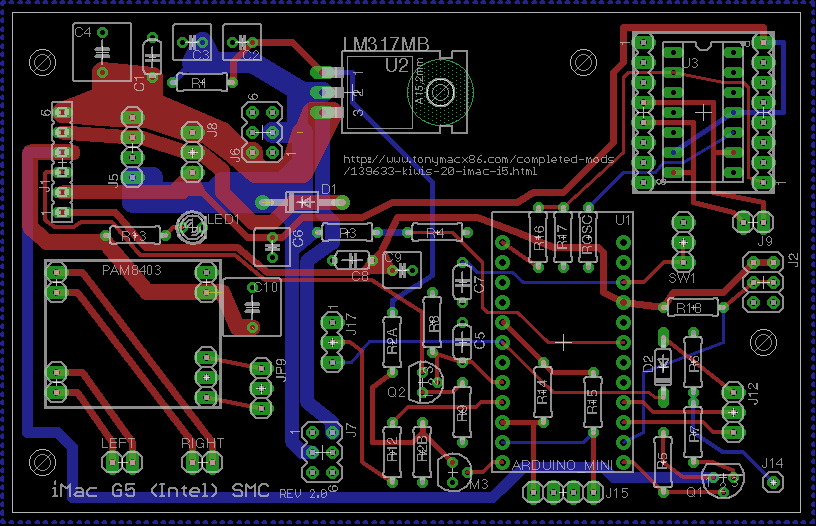- Joined
- Nov 25, 2010
- Messages
- 1,211
- Motherboard
- AsRock X570M Pro4
- CPU
- Ryzen 3700x
- Graphics
- RX 580
Enjoy your time away kiwi!

I would ask ersterherd, he has more experience with this specific computer. He has converted the iSight G5 iMac, which may be identical to yours. See This.Hey Kiwi
q
I have Another Problem i just finished projekt and it works finebut now
i have a antoher Imac (IMAC G5 With I sight)and the Pinout 4 the Lcd is Differnt
The lcd is from Samsung ltm201m1-l01 and a data sheet is hier
http://www.datasheet4u.com/datasheet/L/T/M/LTM201M1-L01_Samsung.pdf.html
is a imac from 2006 i think
are you have a pinlayout ?
can you make one with the datasheet
I hope you can help me please i want to have dual screen so much
hi there,Hi Kiwi, I want to make the LCD conversion to HDMI but I dont know where the VSYNC, HSYNC and AGING cables from the original connector are soldered to the HDMI connector pins.
I look at this table: http://images.img5.s3.amazonaws.com/iMac G5 LCD PinoutsV2.png but I don't understand if are non connected or where to make the connections.
Hope you can help me and sorry for my bad english.

What do you think ?

I think its a good idea many of your improvements are things I would have liked to include anyway, but impossible given my late stage of development. The board I produced above, was really designed to be a drop in replacement to my existing board.Hi Kiwi
Good idea. But I think, that we should try to merge our different hardware platforms. Maybe even could create the "official Tonymac iMac SMC"?
The board I produced above, was really designed to be a drop in replacement to my existing board.
The biggest issue in an iMac G4 is the available thickness (if you want to keep the optical drive). And the fan has a completely different connector. The perfect solution would fit into the "Maintenance Opening" on the back.To be of use is has to be widely applicable, even a cut down version for use in a G4 iMac could be possible, not sure as haven't done a G4 build.
Maybe we should start a new thread and ask, if there are enough people interested in it. If yes, we could do a survey and ask which features should be realized.Really need to define goals and features goals upfront including what is mandatory/optional.
Yes, I agree, through-hole technology is better for DIY.Should really be DIY friendly, i.e. using readily available through-hole (no SMD) components.
